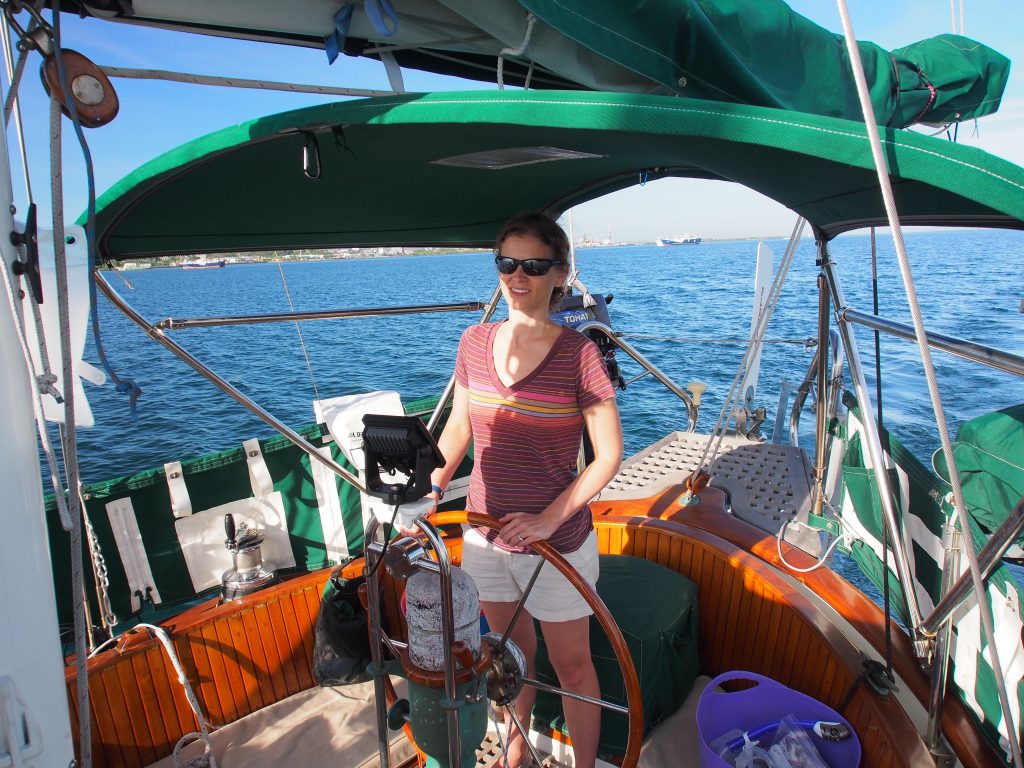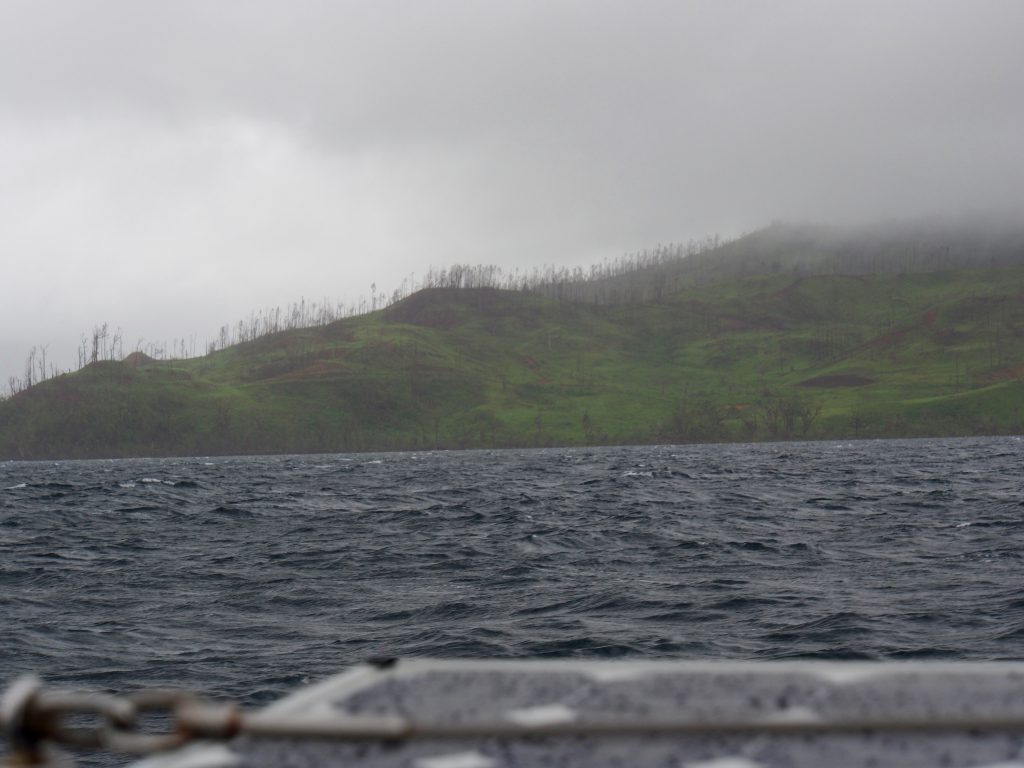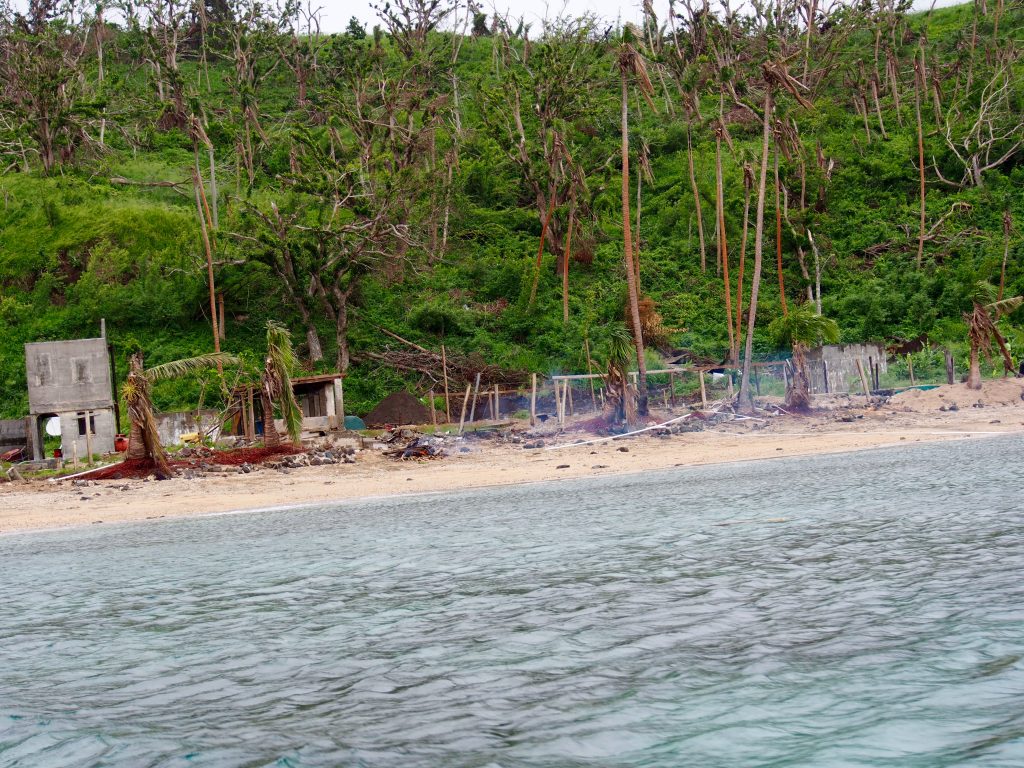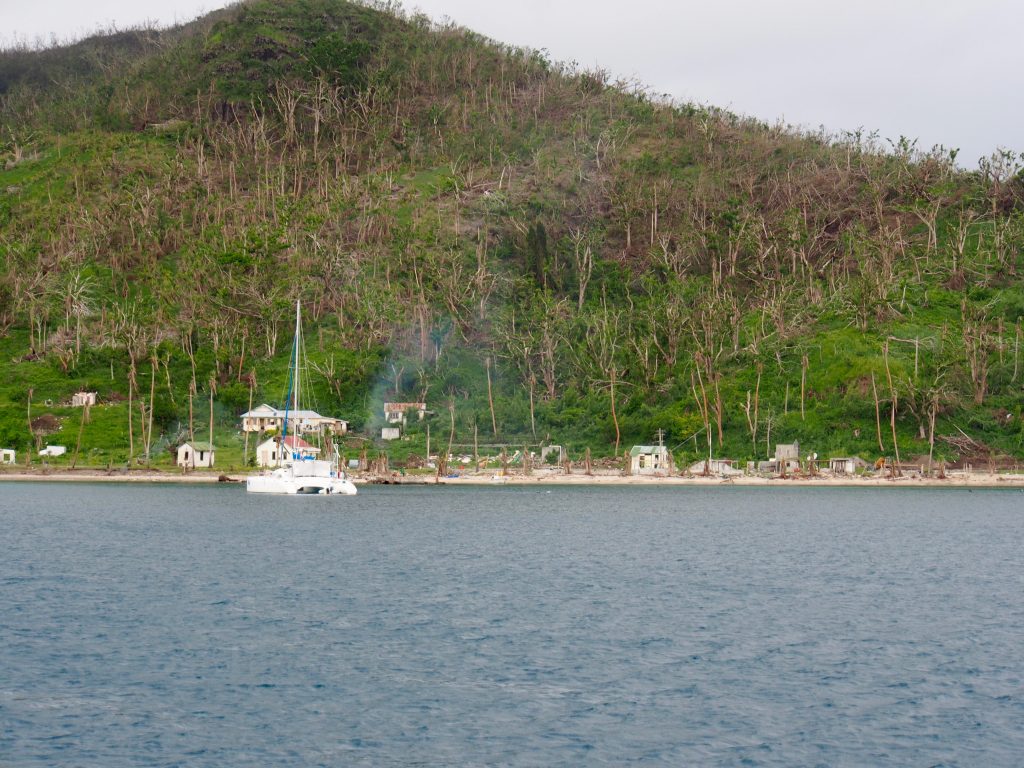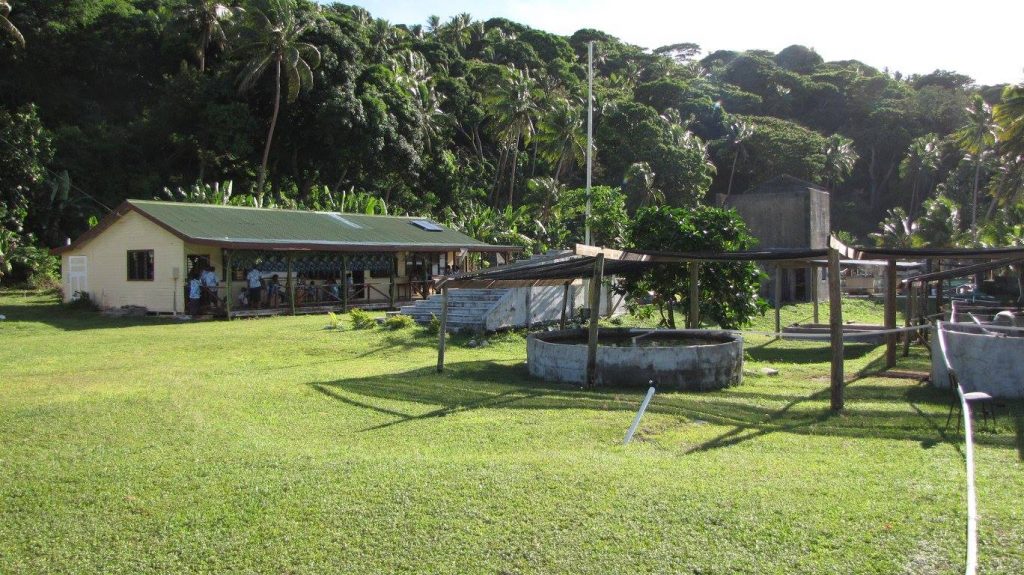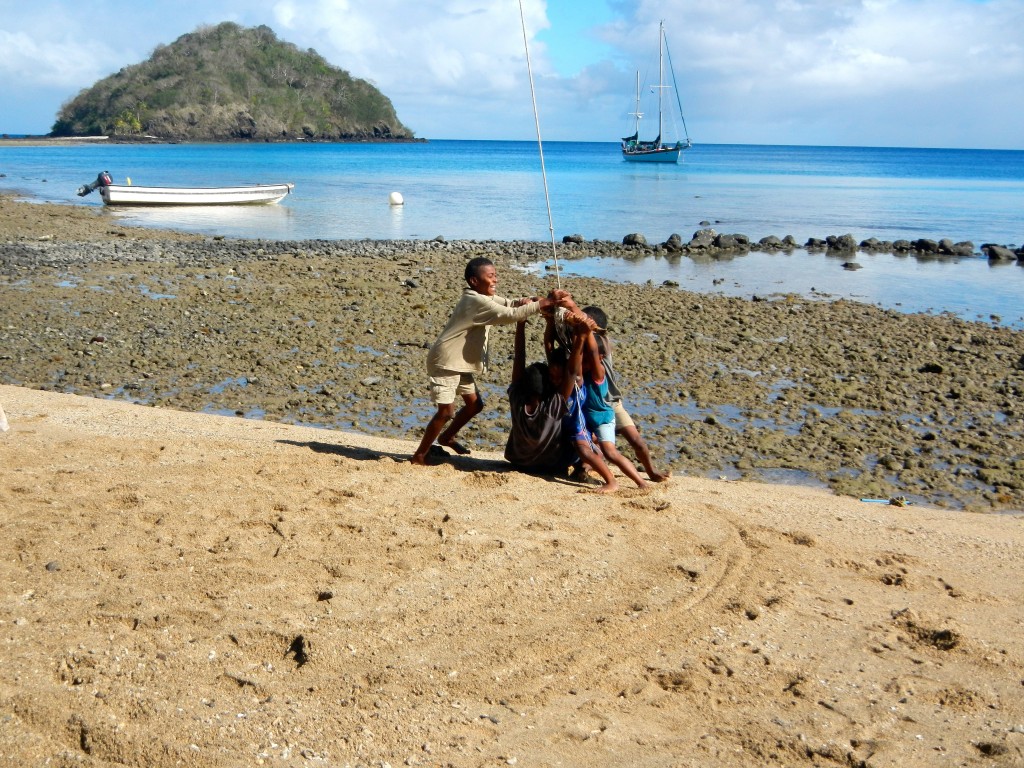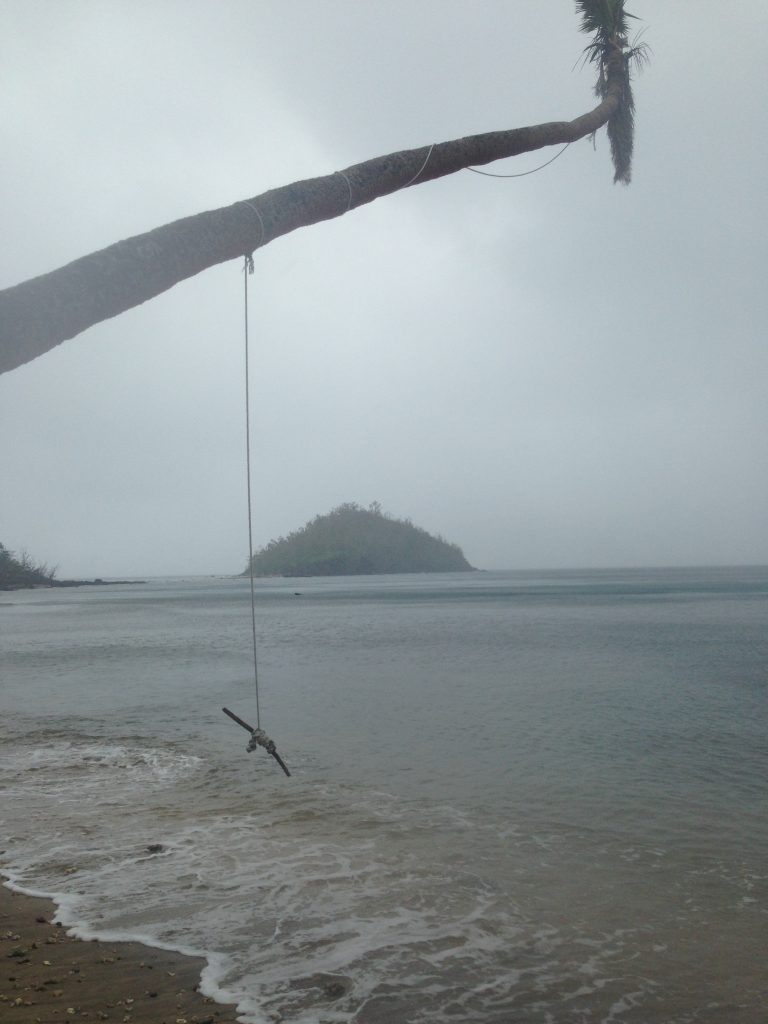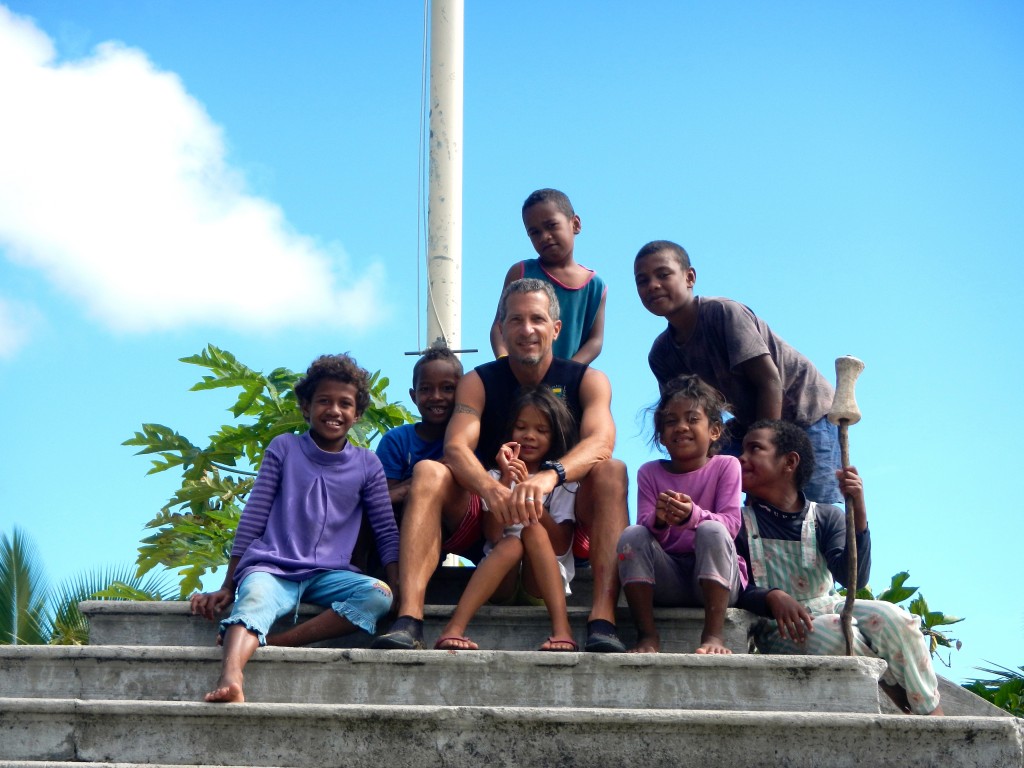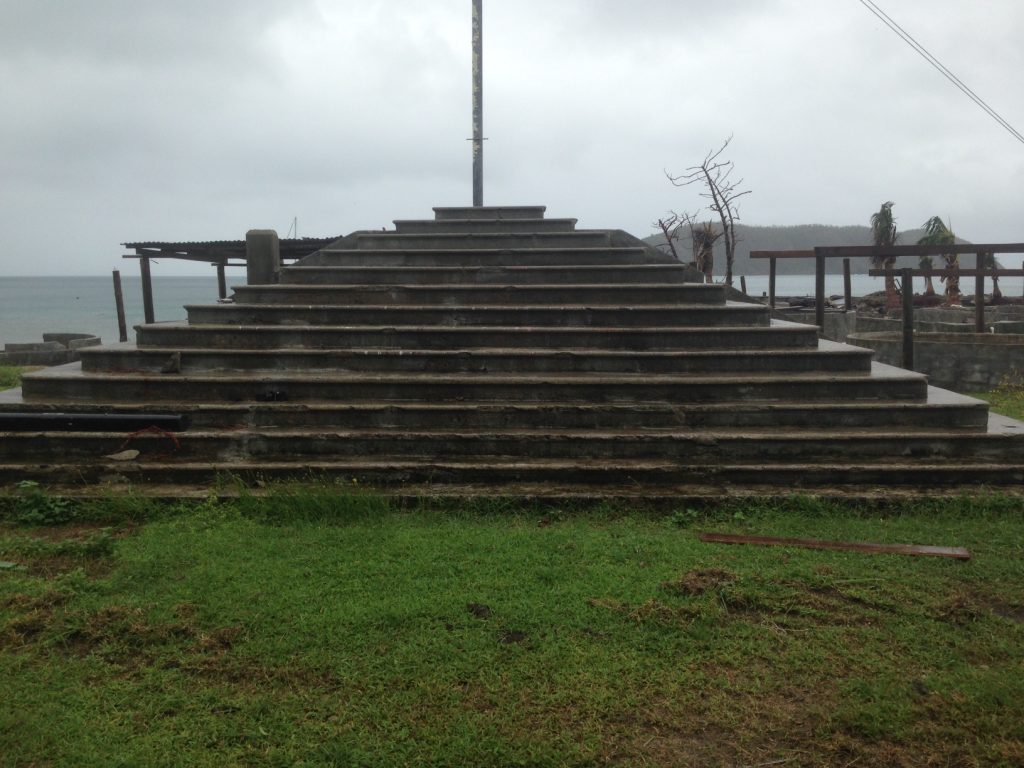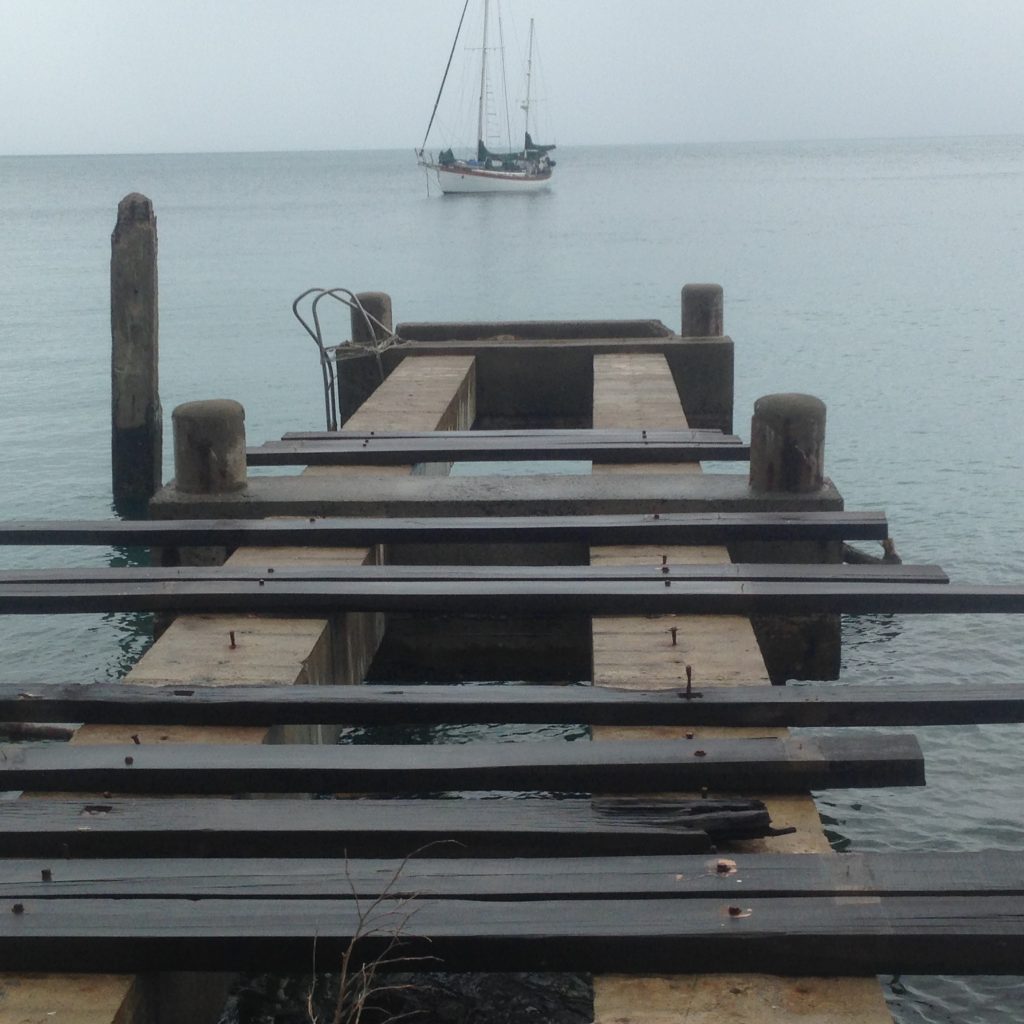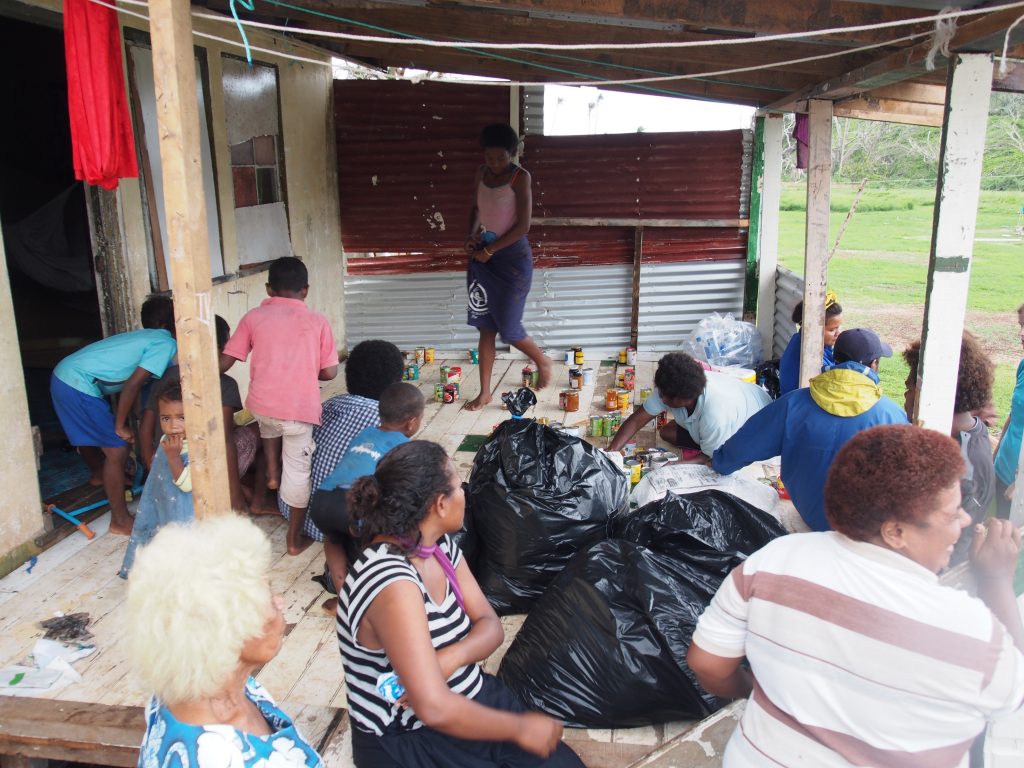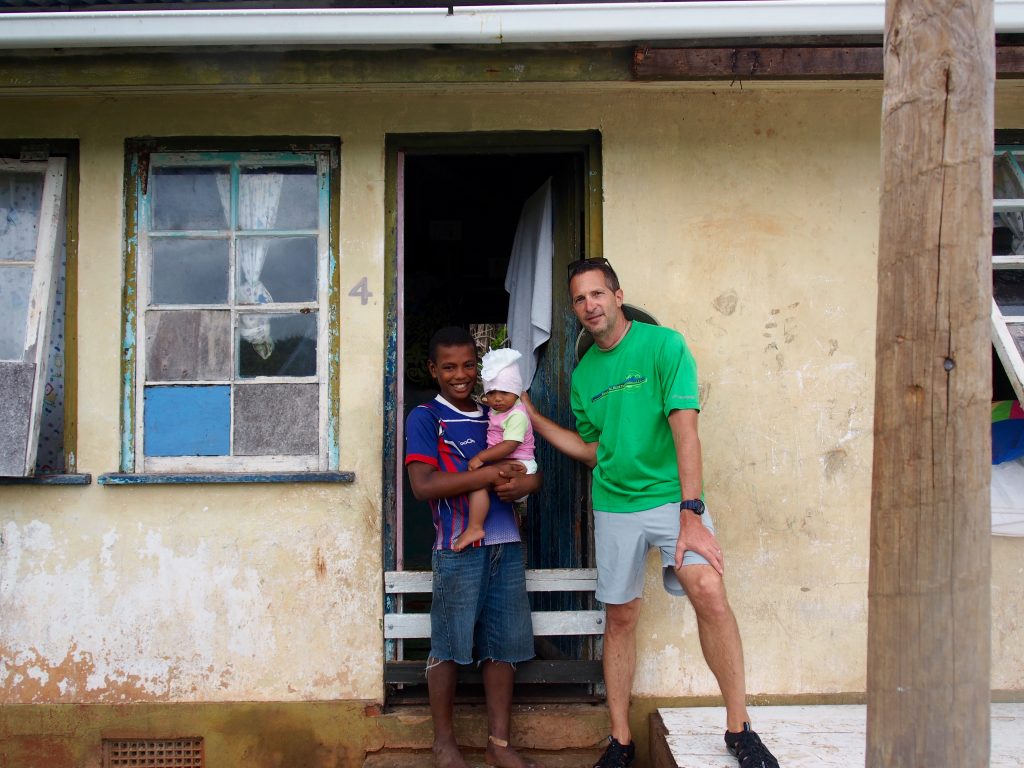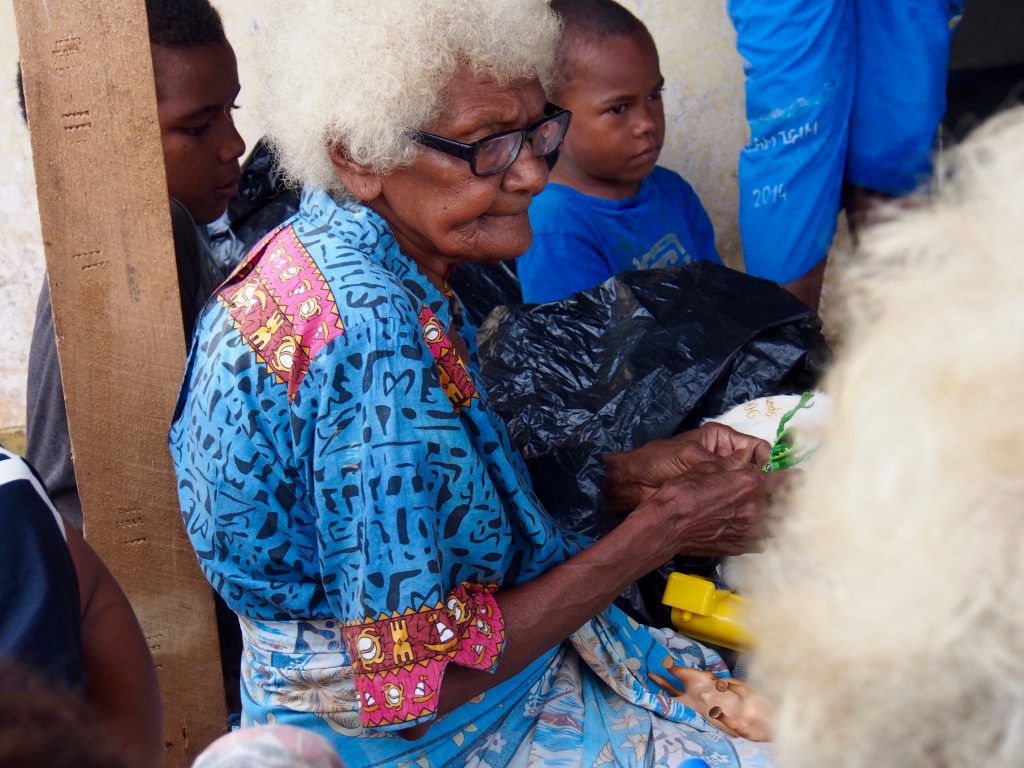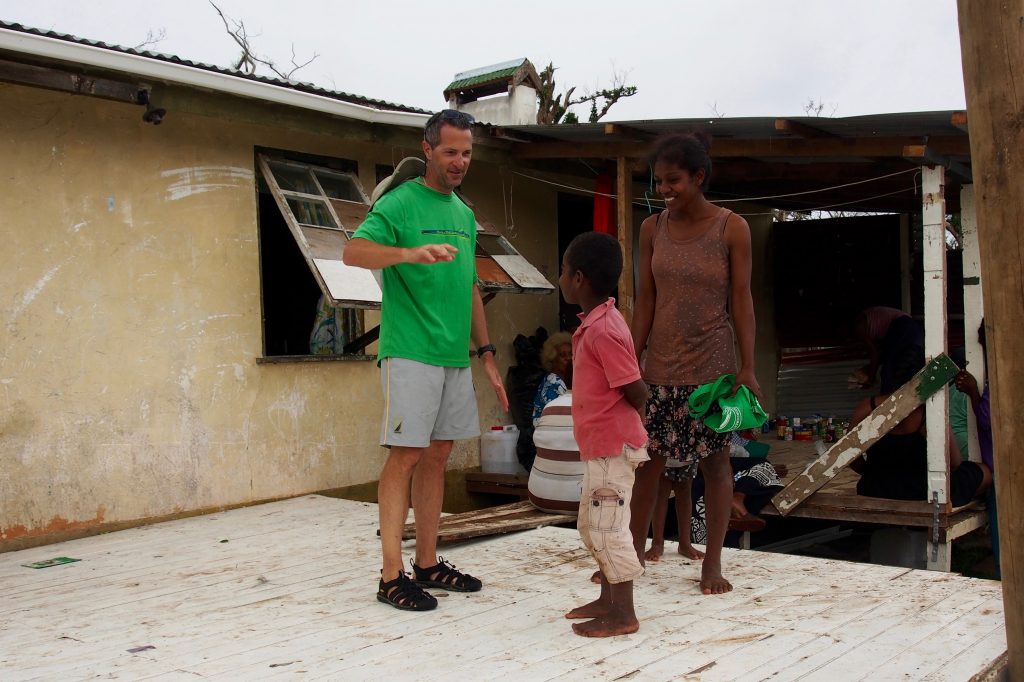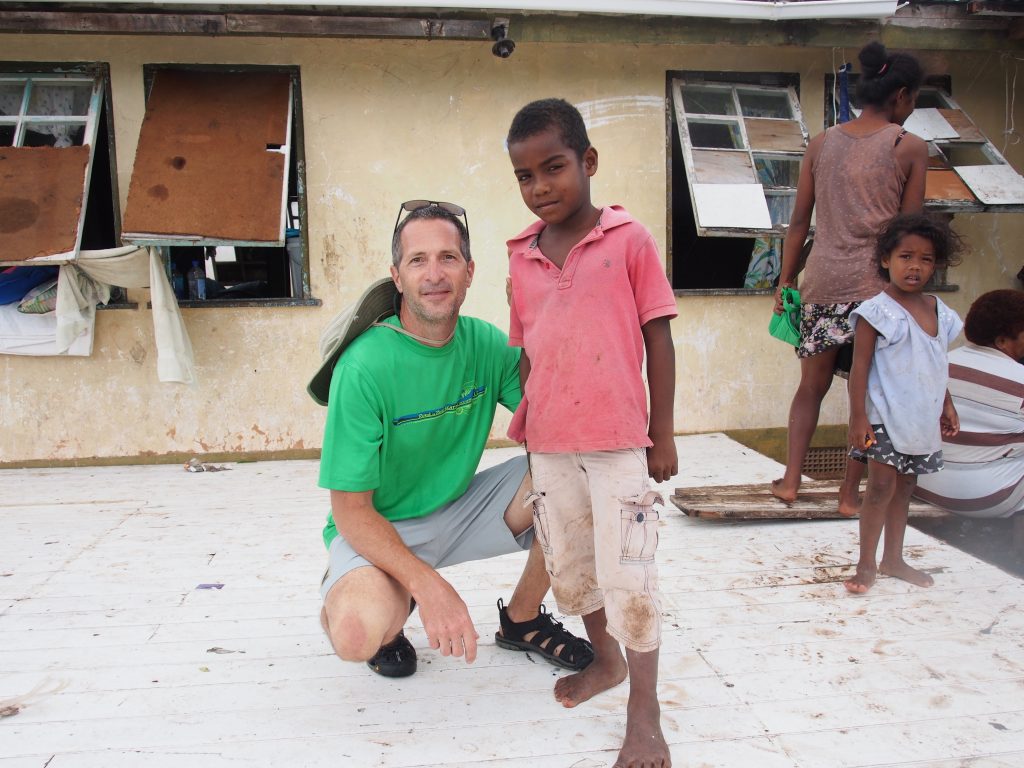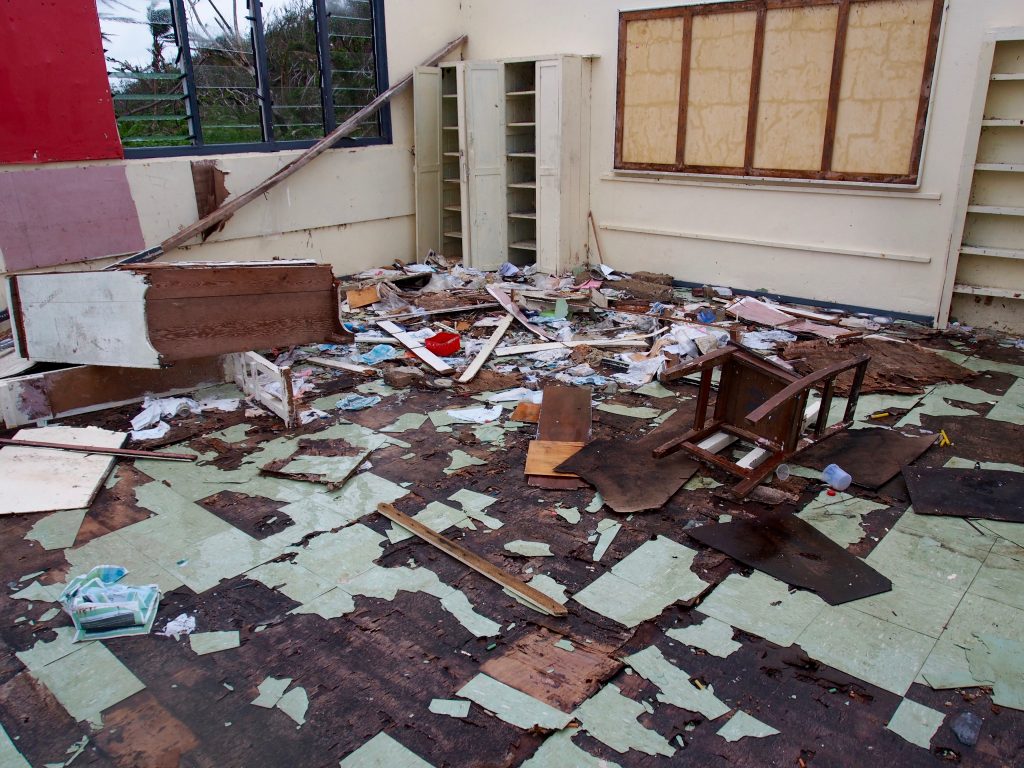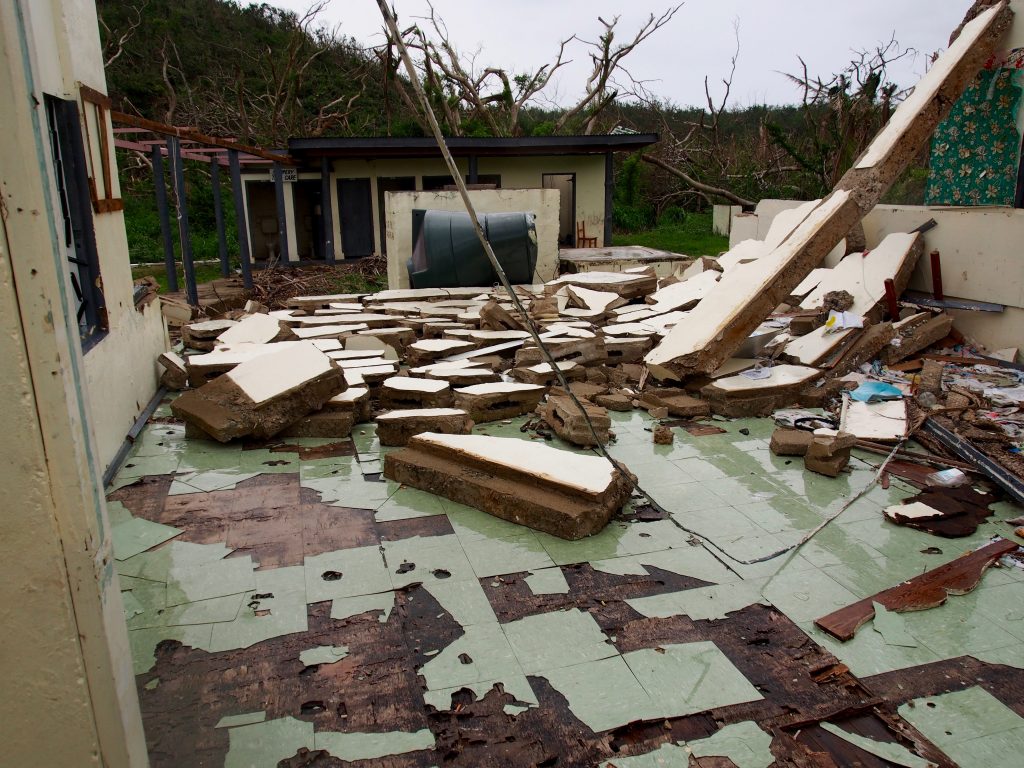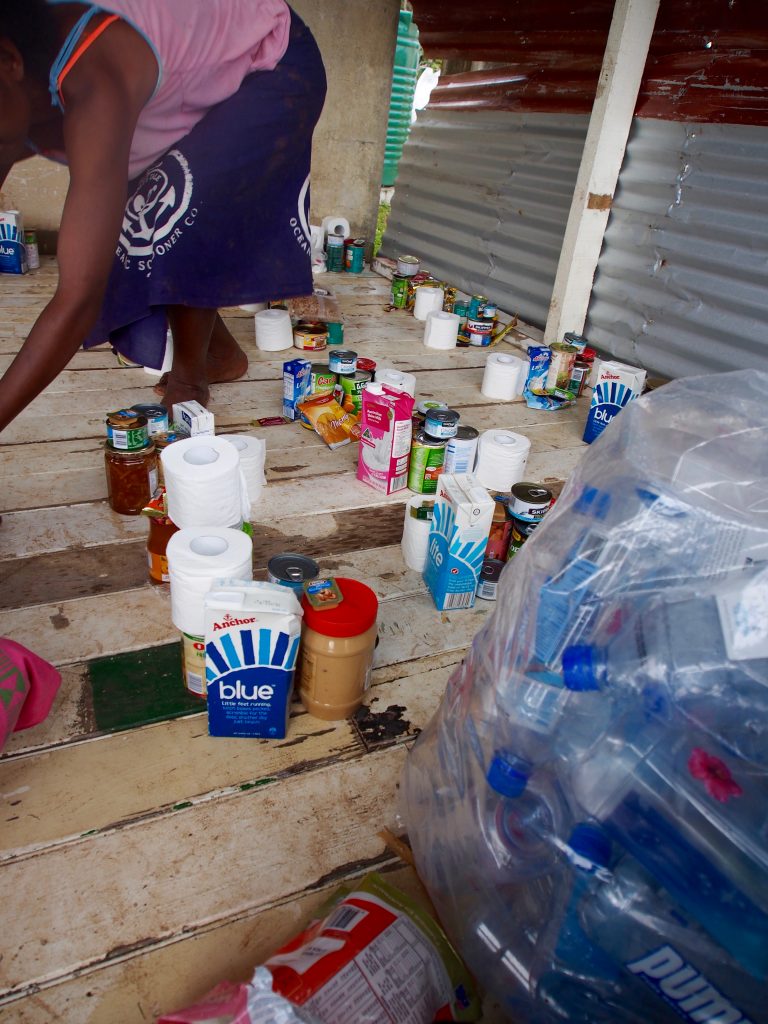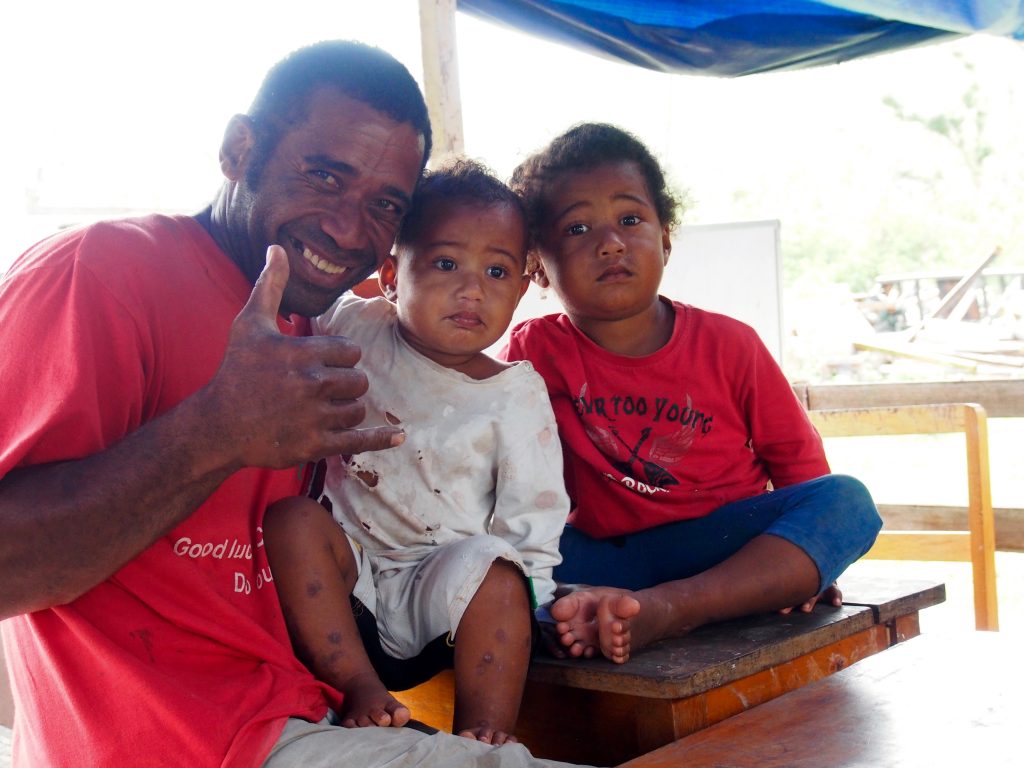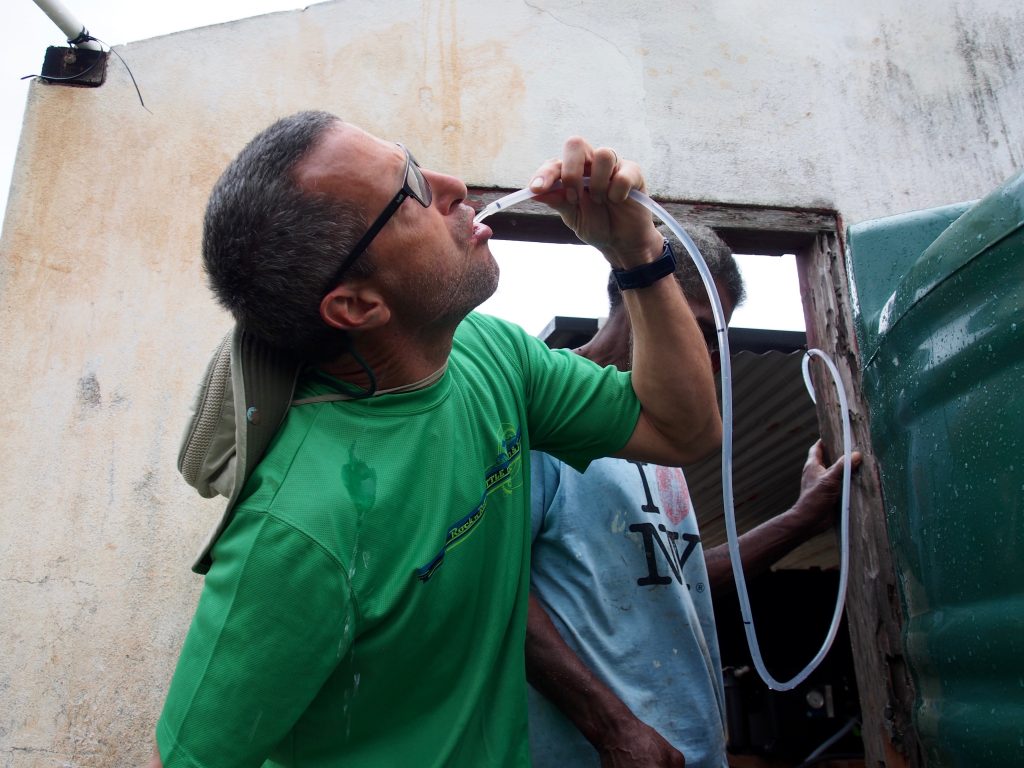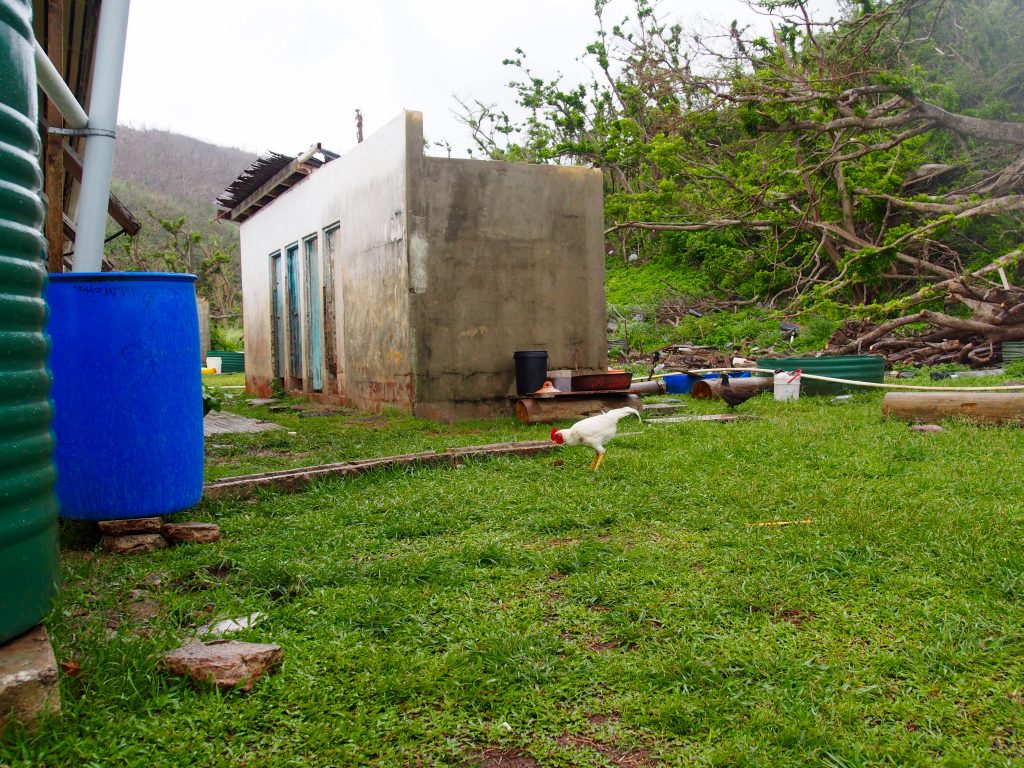Motoring clockwise around Viti Levu and beating into the wind, we took 3 days to get to Makogai. The destruction was obvious as we approached the anchorage–most of the coconut trees were just sticks, the wharf was destroyed, and only a few structures remained. We went ashore and joined the men there who had just started drinking kava. Most were from Na Sau village on the south end of the island and were there helping to rebuild the government’s Fisheries program. At the kava ceremony we heard fascinating stories about how they survived a category 5 cyclone by running from houses as the winds ripped the roofs off. After most of the houses were destroyed, they ran up into the hillside to get some shelter from flying debris. Amazingly, there were no deaths or serious injuries on the island. Most of the people at Na Sau ended up under the foundation of their houses, which was all that remained after the cyclone passed through. It was dark by the time we left the kava ceremony and we made plans for them to pick us up the next morning in their long boat to deliver the aid supplies to Na Sau. The half hour boat ride to Na Sau was rainy and windy. They tied up the longboat and we carried the supplies along a muddy trail to the village. There were lots of women and children at what remained of the village, some of whom I recognized from my visit last year. The school was completely destroyed and the 20 families shared what was left of their houses. The youngest there was a 10 month old girl, and the oldest was an 82 year old woman. Some of the kids that Karen, Jacintha, and I played frisbee, volleyball, and rugby with last year remembered us when I showed pictures of them on my camera. One of the village elders showed us around as the women divided our supplies up into 20 neat piles, starting with the food, then clothing, then toys. A prior Sea Mercy delivery vessel brought a portable Spectre watermaker unit (desalinator) which he turned on while we were there. It took about 2 hours to divide up the supplies, and by the time we left, some of the kids were running around wearing probably their first pair of Nike sneakers. There were lots of questions about some of the food we brought since they werent familiar with much of the canned food. The living conditions there are harsh, especially during the rainy season while they are still rebuilding their houses. We asked what they were most in need of so we could report back to Sea Mercy. A chain saw, more food, re-building the school (their makeshift school was a dozen or so desks under a torn tarp, making it difficult to have class during the rainy season) and more kids clothing were at the top of their list. We also left them with 8 LuminAid solar lights that we brought from Seattle. We took lots of pictures and heard stories about the cyclone during the 3 hours we spent there. They were very appreciative of Sea Mercy and thanked us for bringing the supplies.
